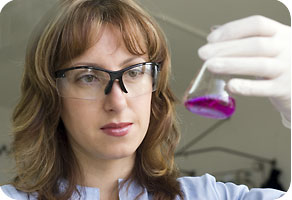Organotin Testing

Organotin compounds are those containing tin and carbon.
There are 4 classes of organotins:
• Mono–organotin compounds containing one carbon group attached to a tin atom and used primarily as heat stabilizers in polyvinylchloride films
• Di-organotin compounds containing two carbon groups attached to a tin atom and primarily used as heat stabilizers in plastics like polyvinylchloride (PVC) and in the manufacturing of polyurethane and silicone curing
• Tri-organotin compounds containing three carbon groups attached to a tin atom and used as biocides for everything from funguses to rats, plants, and in boat paints to prevent the fouling of ship and boat bottoms
• Tetra-organotin compounds containing four carbon groups attached to a tin atom and used primarily to make other organotins

The most toxic of the organotins are the tri-substituted organotins. They are extremely toxic to aquatic life and are endocrine-disrupting chemicals that cause severe reproductive effects in aquatic organisms at relatively low concentrations, as well as neurotoxic and immunotoxic effects in higher animals.
Columbia Analytical has considerable experience analyzing water, porewater, soil, sediment and tissue samples for low level organotins using solvent extraction, derivatization and a gas chromatography flame photometric detector (GC/FPD), consistent with C.A.Krone, et al. and M.O. Stallard, et al.